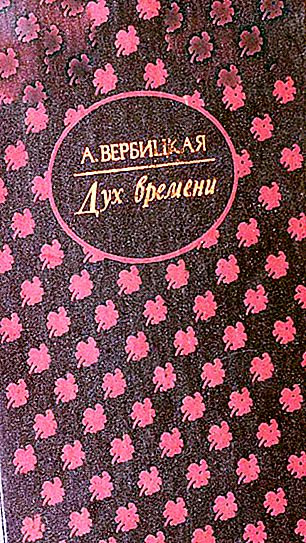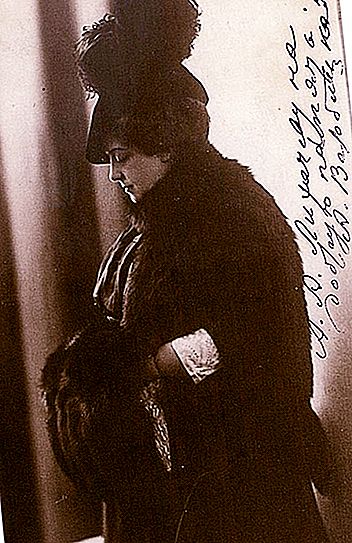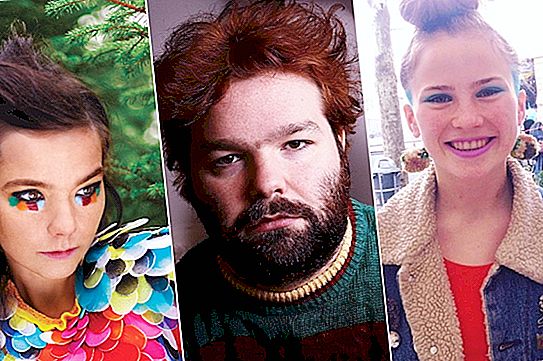Anastasia Verbitskaya - Russian writer, prose writer, memoirist, playwright. With all her creativity, she tried to convey to women the idea that it is not worth putting love for a man at the center of her life. You need to devote yourself to creativity, science or art, so as not to become bankrupt if love passes.
Biography
Anastasia Alekseevna Verbitskaya was born on February 11 (23), 1861 in Voronezh in a noble family. Father - Major A. A. Zyablov, mother - from the artistic environment, relative of the artist P. Mochalov.
In 1877, Verbitskaya graduated from the Elizabethan Women's Institute in Moscow, and then served as a governess. Being the owner of a beautiful voice, she studied at the Moscow Conservatory (vocal class) in 1879-81, which she did not graduate due to lack of funds.
She taught singing and music at the Elizabethan Institute, but according to the charter of the educational institution, she left the service in connection with her marriage in 1882.
In the photo, Anastasia Verbitskaya in the 1900s
Creation
The writing activity of Anastasia Verbitskaya began in 1883 with the political department in the Russian Courier.
In 1887, in “Russian Thought” was placed her first major work of art - the novel “Discord”, dedicated to female emancipation, one of the main themes of Verbitskaya’s entire work. The main character of the work, writer Kameneva, embodied the beloved image of Anastasia - a woman fighting for equality and her happiness.
Since 1894, the constant literary work of Anastasia Verbitskaya began. It was published in many magazines: “Beginning”, “Life”, “Russian Wealth”, “Education”, “Peace of God” and others.
A separate collection of early stories, “Dreams of Life” (1899-1902), was published, in which the writer talentedly described the horror of the loneliness of a person in a big city.
Since 1899, Anastasia Verbitskaya herself acted as a publisher of her own works, and also assisted in the publication of translated novels affecting the theme of feminism and emancipation. The heroines of her works tried to break free of the falsity of family morality.
From 1900 to 1905, several of her works were published:
- "Freed" (1902);
- “The Crime of Marya Ivanovna” (storybook, 1902);
- The First Swallows (1900);
- The Vavochka (2nd edition, 1900-1902);
- “The story of one life” (1903);
- “Happiness” (storybook, 1905);
- Moths (storybook, 1905).
In 1901, Anastasia Verbitskaya’s autobiography, A Collection to Help Student Women, was published, in which she explicitly declared herself as an “ideological” writer, defended the right of women to have their heart and self-reliance in society. Verbitskaya urged them to live their work and not depend on men. Her position received support in certain circles.
In 1905, Anastasia Verbitskaya enthusiastically met the revolution. She even provided her apartment for meetings of the RSDLP committee. The novels “Dawn” (1906) and “Wings Flapped” (1907) were influenced by the events of “Bloody Sunday”.
The novel "The Spirit of Time", written in 1905-1907, became an expression of the revolutionary ideas of the writer. The events of the armed uprising in Moscow became his historical canvas. This work was a great reader's success: over 4 years the novel was published 3 times with a total circulation of more than 50 thousand copies.

In 1909, the novel “Keys of Happiness” was published, in which the theme of female sexual freedom was openly presented. This work has also become a bestseller. Until 1913, another 6 books were published, which were a continuation of this novel.
Performances based on the works of Anastasia Verbitskaya
In 1913, the novel “Keys of Happiness” was filmed by directors Y. Protazanov and V. Gardin. The picture became the highest grossing in pre-revolutionary Russian cinema. In 1914, V. Gardin also filmed the novel "The Little Mutton", the film was included in Timan's "Russian Gold Series". In 1915, V. Viskovsky’s picture “The Power of Love” based on the novel “Elena Pavlovna and Earring” was released.
The only adaptation of the novel by Anastasia Verbitskaya that has survived to this day is the film by A. Andreev "Andrei Toboltsev", shot in 1915.
In 1917, the film “Winners and Vanquished” was released, where Verbitskaya acted as co-director and author of the script. This painting by B. Svetlov was a complete re-enactment of the novel "Keys of Happiness."





